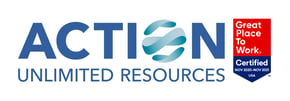With the rising cost of medical insurance, many employers are looking for alternative ways to fund their plans.
All group medical plans fall into one of two categories: self-funded or insured. Each type of plan carries its own set of advantages, disadvantages, rules and constraints.
Insured plans continue to provide virtually no short-term risk or volatility, simple but rigid benefit structures and easy administration. However, they come with many frustrations, internal fees, regulations and lack of control.
There are many considerations when thinking about the various alternative funding options available. Most of these are based on some form of self-funding.
Self-funding
In a self-funded plan, the employer assumes the risk and responsibility of medical claims instead of contracting with an insurance carrier to prefund claims. With the help of their advisors, the employer sets premium rates based on expected claims.
The employer typically contracts with a third-party administrator to administer claims, rent provider networks, and purchases stop loss insurance that protect the plan against high and unpredictable claims.
Some of the advantages of self -funding include more control over plan designs, cash flow, and the individual components that make up the plan. You also avoid state mandates and ACA Health Insurance fees. The employer can benefit from lower internal costs, greater flexibility, and more control over retained funds.

Level Funding
Level funding is a variation of a self-funded plan that addresses one of the main concerns for employers by structuring the plan in a way that allows the employer to pay a fixed, predictable amount each month to a carrier or TPA, aiding in budgeting efforts and protecting against sudden, unexpected claim spikes. This approach typically includes the fixed costs for administration, reinsurance stop loss, fees, and a set amount for claims based on underwriting projections. Under this arrangement, the employer has the benefit of capping their health insurance premiums with the possibility of a refund if claims experience is more favorable than projected.
Group Medical Captives
A captive is self-insured plan set up as an independent insurance company that is created and owned by at least one non-insurance company to insure the employee benefits risks of its owner(s). A captive mitigates the risk associated with a self-funded plan by sharing the risk amongst the owners of the captive. Each of the employer group owners provide a capital outlay and contribute to a risk pool that acts as a shock absorber for claims. Any unused funds at the end of the period are returned to the owners of the captive. Group health captives are a relatively new way for employers to fund health plans and reduce risk. Selecting an experienced group captive manager with the right captive members is critical to the success of these programs.

Consortiums
Consortiums are plans that, by joining a large purchasing group, members can gain the advantages of self-funding with the safety and stability of shared risk insured plans. The difference is consortium members are not owners and have no initial capital outlay. Each member maintains their own autonomy and benefits, retain full transparency in the billing, renewal process, and claim utilization. The members control and manage 100% of their own surplus.
In conclusion, while self-funding in its various forms is not for everyone, there are many advantages and ways to address the concerns associated with funding your own health plan that can alleviate the need to shop the market every year, put control back into your hands, help you avoid some ACA directives, while providing stability for you and your employees.
Weiner Benefits Group is available to review provide direction regarding your health and welfare employee benefit programs. Portions of this article are excerpted from our zywave compliance library available to our clients along with a host of other valuable resources.
Louis D. Memmolo, GBA, CHRS joined George J. Weiner Associates in 1996 and has over 35 years of experience in the employee benefits, insurance and financial services industry. A partner in the firm, Louis is a graduate of the NAIFA Leadership in Life Institute (LILI) and also served as past president of NAIFA Central. Louis earned his Group Benefits Associate designation from the IFEBP through Wharton, and his Certified Health Care Reform Specialist designation from the Healthcare Reform Policy Center & Institute, and is a member of NAHU as well as the local chapter of SHRM.



Enjoy this blog? Leave a comment or ask a question!